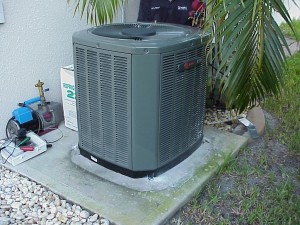AC systems in the premium categories are those that have energy efficiency ratings of 16 SEER and above. Most of the systems in this category have an important feature which is known as capacity modulation. Simply defined, modulating AC systems consume less energy, have an enhanced humidity control ability, give better air quality, and give homeowners a comfortable environment throughout all seasons.
That being said, modulating AC systems are not exactly the same, but rather they fall in two main categories; two-stage AC systems and variable speed AC systems.
Energy Consumption
The two-stage modulating systems usually operate at 2 levels of capacity; 67% on light load air conditioning days and 100% during the hottest days. When operating at 67%, the system uses less energy due to reduced demand.
The advantage with a variable-speed AC system is that it can slow down to as low as 20% capacity and speed up to as high as 100% capacity. This ensures the cooling required is delivered precisely hence lower amounts of energy consumption. This is why two-stage compression technology systems are rated anywhere between 16 and 18 SEER while variable speed systems are 25 SEER and above.
Humidity Control
According to the Center for Disease Control and Prevention, the optimal humidity levels in a typical home should be kept below 50%. This is because high humidity levels can result in the growth of mold which leads to health complications. During the operation of the AC system, air moves over the condensing unit which results in the removal of humidity. The longer the duration the system runs, the more the humidity removed.
Compared to two-stage systems, variable speed systems have the longest run times at low speeds and energy levels thus resulting in the most favorable humidity for homeowners.
Comfort
When variable speed AC systems are run for longer periods, streams of air move throughout the space and the filter oftentimes. This movement reduces both the hot and cold spots thus giving homeowners a more comfortable indoor environment complete with cleaner air. This can mean a lot in areas where temperatures are high for the most part of the year such as the southern part of the United States.
When compared with fixed systems, two-stage systems offer significant enhancement in energy savings and comfort. A variable speed system on the other hand takes the comfort and functionality to a higher level by giving the homeowner the best overall level of comfort without placing a huge demand on energy thus reducing the impact on your wallet.




